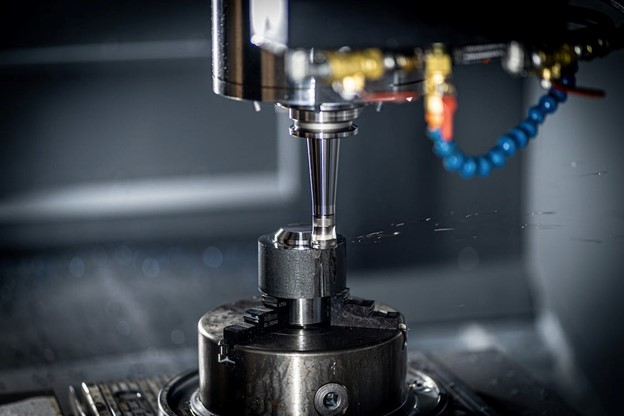
Building any kind of robot involves using ready-made parts or, more often, specifically designed and manufactured parts. To make the parts you need to create your robot, you can use CNC machining, 3D printing, or laser cutting.
Let us take a look at each one so that you can determine which technique is best for you.
Using CNC Machining for Building a Robot
Computer Numerical Control machining is a manufacturing process that involves using computers to control machine tools.
CNC machining can be invaluable when building robots because the technique allows for the accurate and repeatable production of parts, such as gears, casings, and joints, which are integral components in almost any robot.
Precise machining with CNC produces high-quality parts that can be assembled into virtually any form of robot, from industrial robots to complex surgery-assisting machines.
The process starts with blueprint designs generated by CAD (Computer Aided Design) software. These design plans guide moving the machine tools via a series of coded instructions – think drilling, cutting, or shaping metal parts with supreme precision.
The extraordinary precision of CNC machines enables you to fine-tune parts down to minute details, which is crucial, given robots’ intricate functions.
Additionally, CNC’s capacity for mass replication ensures consistency, which is vital for industries requiring many identical robots. Furthermore, complex parts challenging traditional manufacturing can be easily executed through CNC machining.
Do not forget that you always have the option to outsource CNC machining services. That means you do not have to spend time learning CNC production methods and investing in CNC equipment. Instead, you can focus more time on the design element of your robot.
Using 3D Printing for Building a Robot
3D printing is an additive manufacturing process that makes three-dimensional solid objects from a digital file. Both industries and home hobbyists widely use building parts to construct robots.
Instead of manually machining parts or ordering them externally, you can simply print them out using a 3D printer, which can be incredibly useful for building bespoke robots or experimenting with creative new designs.
Robots created with 3D-printed parts range from simple beginner models to sophisticated drones and domestic robot vacuum cleaners.
If you want to use the 3D printing technique to create your robot, begin with a blueprint – usually designed using CAD software – which is then split into hundreds or even thousands of minuscule layers by slicing software. The printer reads these files and lays down successive layers of material, such as plastic or metal until the entire object is created.
The benefits are numerous—rapid prototyping is one of the most significant. You can cut down construction and iteration time enormously compared to traditional methods. Moreover, the flexibility with which you can design intricate parts is phenomenal.
Using Laser Cutting for Building a Robot
You can create parts for robots, like chassis, for instance, quickly and easily with laser cutting technology. It enables you to make parts with incredible precision and flexibility.
Laser cutting can benefit Various robotic types, such as industrial robotic arms or educational mini-robots. Even small drones with intricate designs often owe their creation to this precise technology.
The laser cutting method involves a focused laser beam, which melts material in an extremely thin and precise line. This resultant line allows for minute adjustments, giving you unparalleled control over the cutting process.
Creating intricate parts that fit together perfectly is invaluable in robotics.
Additionally, its fast cutting speed reduces the production time significantly compared to other traditional methods. This also allows for rapid prototyping, which is highly beneficial in the iterative design process of building robots.
How to Determine Which Technique Is Best for You
Determining which method best fits your robotics construction venture involves careful consideration. CNC machining shines in producing metal parts when you need absolute precision and the ability to replicate parts consistently.
If you plan to iterate designs quickly, experiment with complex structures, or build robots on a budget, 3D printing could be your best option. Meanwhile, laser cutting should perhaps be your go-to technique if precision-cut materials are what you need, especially if you are creating a shell or casing for robots.
Also, assess your specific design requirements, time constraints, budget, and natural inclinations. And do not overlook that you can combine techniques to create your robot.






















